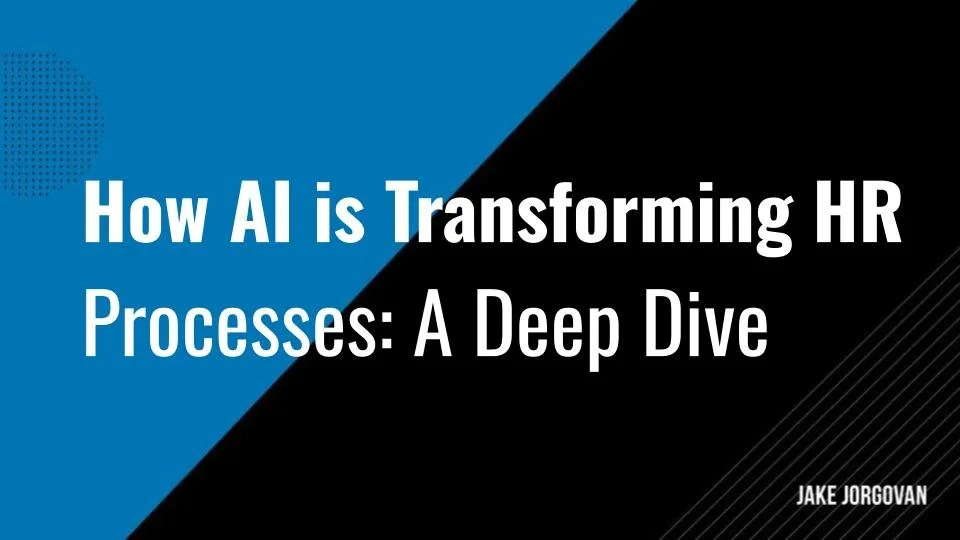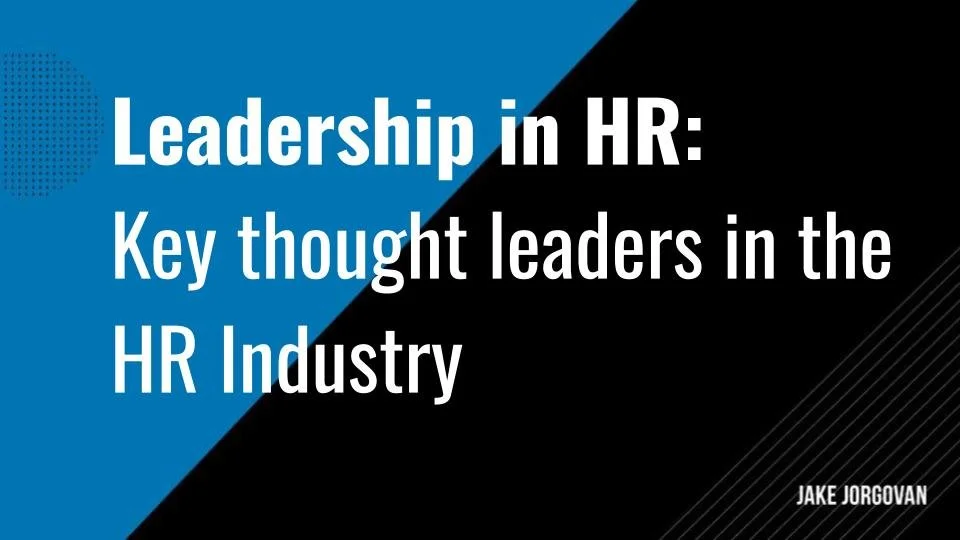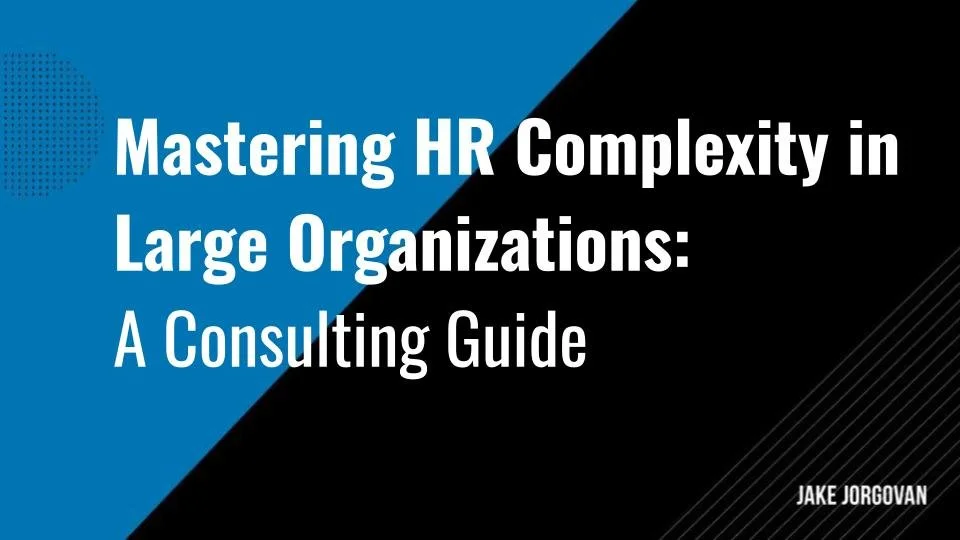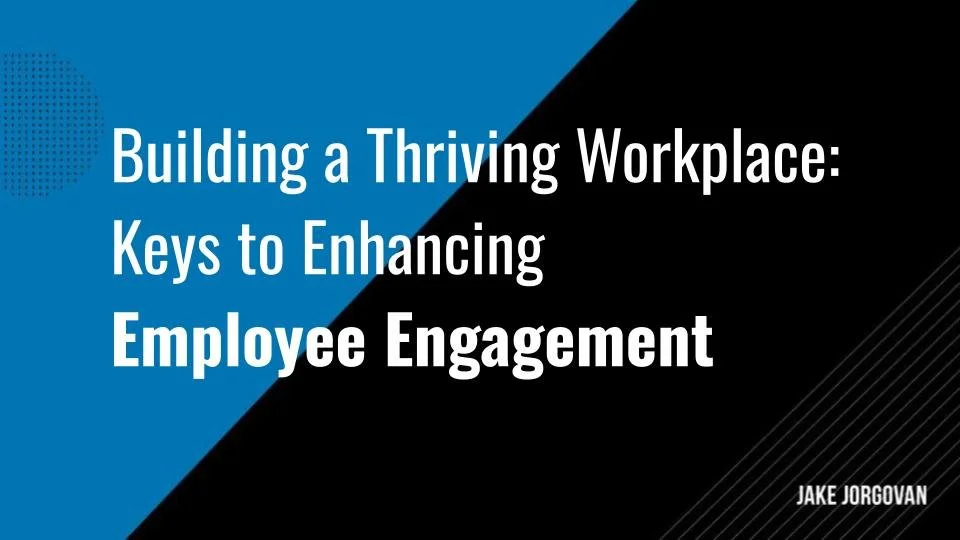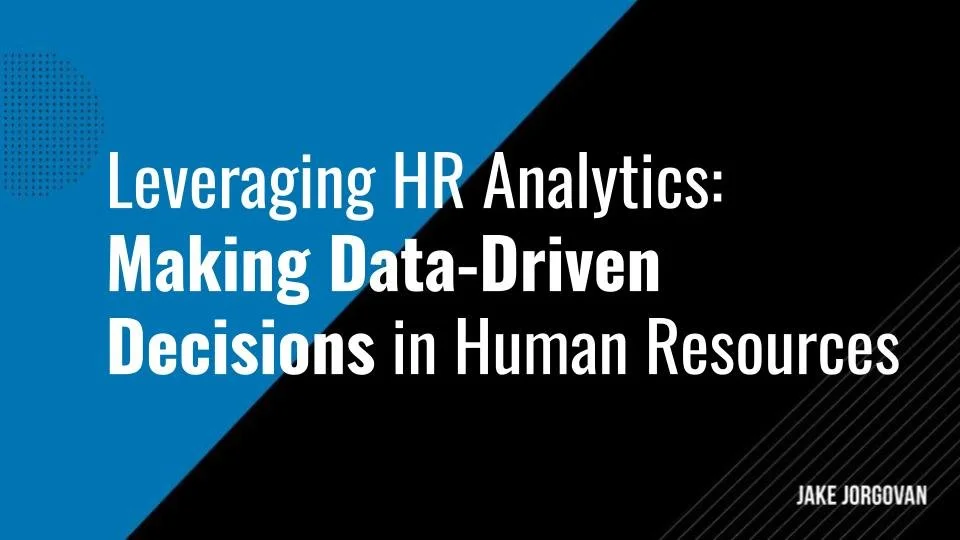Mastering HR Complexity in Large Organizations: A Consulting Guide
HR is challenging because professionals need the right mix of data and intuition.
Things get even more complicated when dealing with HR in large organizations.
Luckily, you’re on the right page to learn how to solve that issue.
First, we’ll discuss the factors that determine HR complexity. Then, we’ll analyze 7 practical solutions, offering step-by-step action plans and real-life examples so you can start implementing them today.
Let’s dive in.
Factors that determine HR complexity in large organizations
In large organizations, the complexity of Human Resources (HR) is shaped by several factors. Understanding these factors will lead to more strategic HR management. Here’s what to consider:
Organizational Structure and Size: Large organizations' sheer scale and multi-layered hierarchy introduce complexity because decentralized units, subsidiaries, and global operations can lead to disparate HR practices that need cohesive integration.
Workforce Diversity: Large organizations typically employ a diverse workforce spanning various nationalities, cultures, age groups, and professional backgrounds. This diversity necessitates sophisticated HR strategies tailored to meet employee needs and expectations while aligning with the organization's overarching goals.
Regulatory Compliance: HR in large organizations entails a slew of local, national, and international labor laws, and regulations. Large organizations must ensure compliance across different jurisdictions, so the HR department in such a company deals with intricate legal considerations and continuous monitoring of regulatory changes.
Technological Integration: Large organizations are likelier to implement tech in their HR departments. And the adoption of advanced HR technologies brings its own set of challenges. You must ensure these technologies are scalable, interoperable, and meet the organization's needs effectively. This requires a nuanced understanding of the technological landscape and the organization's strategic objectives.
Change Management: Large organizations undergo continuous transformations, including mergers, acquisitions, and strategic realignments. Managing the human aspect of these changes—ensuring smooth transitions, maintaining employee engagement, and aligning new cultures—demands a sophisticated approach to change management.
Talent Management at Scale: The complexities of recruiting, retaining, and developing talent are magnified in large organizations. You must design and implement effective talent management strategies that are scalable and personalized. These strategies should address the aspirations and potential of a vast employee base. No pressure.
Cross-functional Collaboration: HR functions in large organizations must collaborate with numerous other departments, such as finance, operations, and IT. This requires a deep understanding of the business. You must also have the ability to manage cross-functional relationships and projects effectively.
Global Workforce Management: For multinational corporations, managing a global workforce involves complex considerations, including cultural sensitivities, time zone differences, and varied employment practices. This requires globally consistent and locally adaptable HR strategies.
Data Privacy and Security: With the increasing reliance on data for HR decisions, large organizations face the complex challenge of ensuring data privacy and security. This transcends technical solutions; you must also consider organizational policies and employee training to safeguard sensitive information.
How to streamline HR processes in large companies
After reading the previous section, you better understand the complexities that shape HR management in large companies.
This section will help you solve those issues with actionable steps and real-life examples. Let’s dive in.
1. Implement scalable HR technologies and systems
Implementing scalable HR technologies and systems means integrating flexible solutions that can grow and adapt with your organization. This involves selecting platforms that can accommodate increasing users, more complex processes, and expanding data requirements without significant overhauls.
Here’s how you can do that:
Assess Current and Future Needs: Evaluate your current HR processes and anticipate future needs based on your growth projections.
Research Scalable Solutions: Look for HR platforms known for their scalability, such as cloud-based HRIS (Human Resource Information Systems) that offer modular features. Carefully assess vendors for their track record in supporting growing companies and the ability to provide ongoing updates and support.
Test and implement: Implement the chosen solution in a controlled environment to ensure it meets your requirements before full-scale deployment. Provide comprehensive training for HR staff and end-users to ensure smooth adoption of the new system. Regularly review the system's performance and adapt configurations to accommodate new requirements as your company grows.
A real-world example of this approach is Netflix's adoption of cloud-based HR systems. As Netflix experienced rapid growth, transitioning from a DVD rental service to a global streaming giant, it needed HR systems to scale with its expanding workforce and complex, global operations.
Netflix implemented scalable HR solutions that supported its dynamic needs, from talent management to global payroll and benefits administration.
The same approach could help your company maintain agility and innovation while managing a larger, more diverse team.
2. Streamline HR processes through automation and standardization
Streamlining HR processes in large companies can be done through automation and standardization. This method involves identifying repetitive tasks and workflows that can be optimized with technology. Next, you should establish consistent organizational procedures to improve efficiency and reduce errors.
Here's how you can achieve this in a step-by-step manner:
Identify Repetitive Tasks: Conduct an audit of HR processes to identify tasks that are repetitive and time-consuming, such as data entry, payroll processing, and leave management.
Select Automation Tools: Research and select HR automation tools that can handle these repetitive tasks efficiently. Look for tools that offer integration capabilities with your existing systems.
Develop Standard Operating Procedures (SOPs): Create SOPs for all HR processes to ensure task consistency across different departments and locations. Train HR staff and other employees on the new tools and SOPs to ensure widespread adoption and proper use of the technology. Continuously monitor the automated processes and make adjustments as necessary to optimize performance and efficiency.
Siemens HR automation tools and standardizing processes are a solid example. These tools significantly reduce manual work, improve data accuracy, and enhance employee experience. For instance, the automation of their travel expense management system saves time for employees and ensures consistent application of travel policies, reducing compliance risks.
The same type of automation and standardization can allow you to manage a global workforce more effectively.
3. Foster a culture of continuous learning and development
Fostering a continuous learning and development culture entails creating an environment where employees are supported in pursuing knowledge and skill enhancement. This culture promotes ongoing professional growth, adaptability, and innovation within the organization.
Here’s a quick plan to kickstart this:
Assess Learning Needs: Regularly assess your workforce's skill gaps and learning needs to tailor learning initiatives effectively. Develop personalized learning paths for employees, aligning with their career goals and the organization's objectives.
Leadership Buy-in: Secure commitment from senior leadership to champion learning and development as core organizational values.
Diverse Learning Platforms: Introduce a variety of learning platforms, such as e-learning courses, workshops, webinars, and mentorship programs, to cater to different learning styles and needs.
Recognition and Incentives: Implement a system of recognition and incentives to reward employees for their learning achievements and application of new skills.
Deloitte has a good approach to continuous learning because it established Deloitte University, a state-of-the-art facility that serves as a learning and leadership development hub. Here, employees from all levels participate in tailored training programs designed to enhance their professional skills and leadership capabilities.
Plus, they all look like they’re having fun.
4. Leverage data analytics for informed decision-making
Leveraging data analytics in HR involves collecting, analyzing, and using workforce data to make evidence-based decisions. This approach helps understand trends, predict future needs, and enhance your overall HR strategies.
To effectively leverage data analytics, follow these steps:
Data Collection: Start by ensuring you have systems for collecting a wide range of HR data, such as employee performance metrics, engagement levels, turnover rates, and recruitment data.
Implement Analytics Tools: Choose and implement analytics tools to process and analyze the collected data. These tools should be capable of handling large datasets and providing actionable insights.
Develop Analytical Skills: Invest in developing the analytical skills of your HR team, either through training or by hiring data-savvy professionals, to ensure they can effectively interpret data insights.
Create Reporting Dashboards: Develop dashboards that provide real-time insights into key HR metrics, making it easier for decision-makers to access and understand important information.
Make Data-Driven Decisions: Use the insights gained from data analytics to inform strategic HR decisions, such as workforce planning, talent management, and employee engagement strategies. Regularly review the outcomes of decisions informed by data analytics and adjust your strategies as needed to ensure continuous improvement.
A real-life example of leveraging data analytics in HR is Google's "People Analytics" team. This team applies sophisticated data analysis techniques to solve HR problems, from improving hiring processes to enhancing employee well-being and productivity.
For instance, by analyzing data on employee feedback and performance, Google was able to identify key drivers of employee satisfaction and tailor their HR initiatives to address these areas, leading to improved employee retention and performance.
5. Adopt AI to streamline your work
Adopting Artificial Intelligence (AI) in your organization can significantly streamline workflows, automate routine tasks, and provide valuable insights, leading to increased efficiency and effectiveness.
To integrate AI into your work processes, consider these steps:
Identify Opportunities for AI: Analyze your operations to identify areas where AI could have the most impact, such as data analysis, customer service, or HR processes. Research and select AI technologies that best fit your identified needs, ensuring they are compatible with your existing systems.
Pilot Programs: Start with pilot programs to test AI solutions in specific areas before wider implementation, allowing you to gauge effectiveness and make necessary adjustments.
Train and Monitor: Provide training for employees to ensure they understand how to use the new AI tools and how these tools will enhance their work. Continuously monitor the performance of AI implementations and gather feedback to optimize and adjust the use of AI in your processes.
Pro tip: Ensure the ethical use of AI, being transparent with employees about how AI is being used and how it impacts their work.
A real-world example of adopting AI to streamline work is IBM's use of its AI platform, Watson, to transform various aspects of its operations. IBM has leveraged Watson in areas such as HR for talent acquisition, where AI analyzes job candidates' fit based on their resumes and past experiences.
This AI-driven approach has streamlined the hiring process and improved the quality of hires by enabling more data-driven, unbiased decisions.
6. Adopt agile HR practices for flexibility and adaptability
Adopting agile HR practices involves integrating principles of agility—such as flexibility, collaboration, and speed—into HR functions to enhance responsiveness to changing organizational needs.
Here’s the gist of it, but you can find more info in the video below:
Embrace Cross-Functional Teams: Form HR teams with members from various departments to encourage diverse perspectives and rapid problem-solving. Empower HR teams with the autonomy to make decisions and take actions based on their expertise and real-time insights.
Iterative Processes: Implement iterative processes for HR projects, allowing for regular adjustments at each stage. Establish regular feedback loops with employees and management to ensure HR initiatives are aligned with employee needs and organizational goals.
Flexible Policies: Develop flexible HR policies that can be adapted as the organization evolves or as new insights are gained.
7. Build strategic partnerships within and outside the organization
Building strategic partnerships, both internally and externally, involves creating alliances that can enhance organizational capabilities, drive innovation, and open new avenues for growth.
To foster these strategic partnerships, consider the following approach:
Find Internal and External Partners: Strengthen relationships between different departments within your organization to foster internal collaboration and leverage diverse expertise. Look for potential partners outside the organization, such as academic institutions, industry associations, or technology providers.
Align Goals and Values: Ensure that the goals and values of your internal teams and external partners are aligned to foster a strong, productive partnership.
Joint Initiatives: Develop joint initiatives or projects that benefit all parties involved, encouraging shared investment and mutual success.
For example, businesses partner with the University of Cambridge to access highly skilled future employees who strongly desire to understand and change the world for the better.
Wrapping Up: How to Start Implementing These Solutions
If you’ve made it so far, you now know seven methods to master HR complexity in a large organization.
The key to implementing these methods successfully is to be strategic about it.
Start with a clear assessment of your current HR capabilities and identify areas where these methods can bring the most impact.
Prioritize initiatives that align with your organization's specific challenges and goals, and engage your team in adopting these practices for a more streamlined and efficient HR function.
Remember, the journey to simplifying HR complexity is continuous, requiring adaptability and commitment to innovation.

















